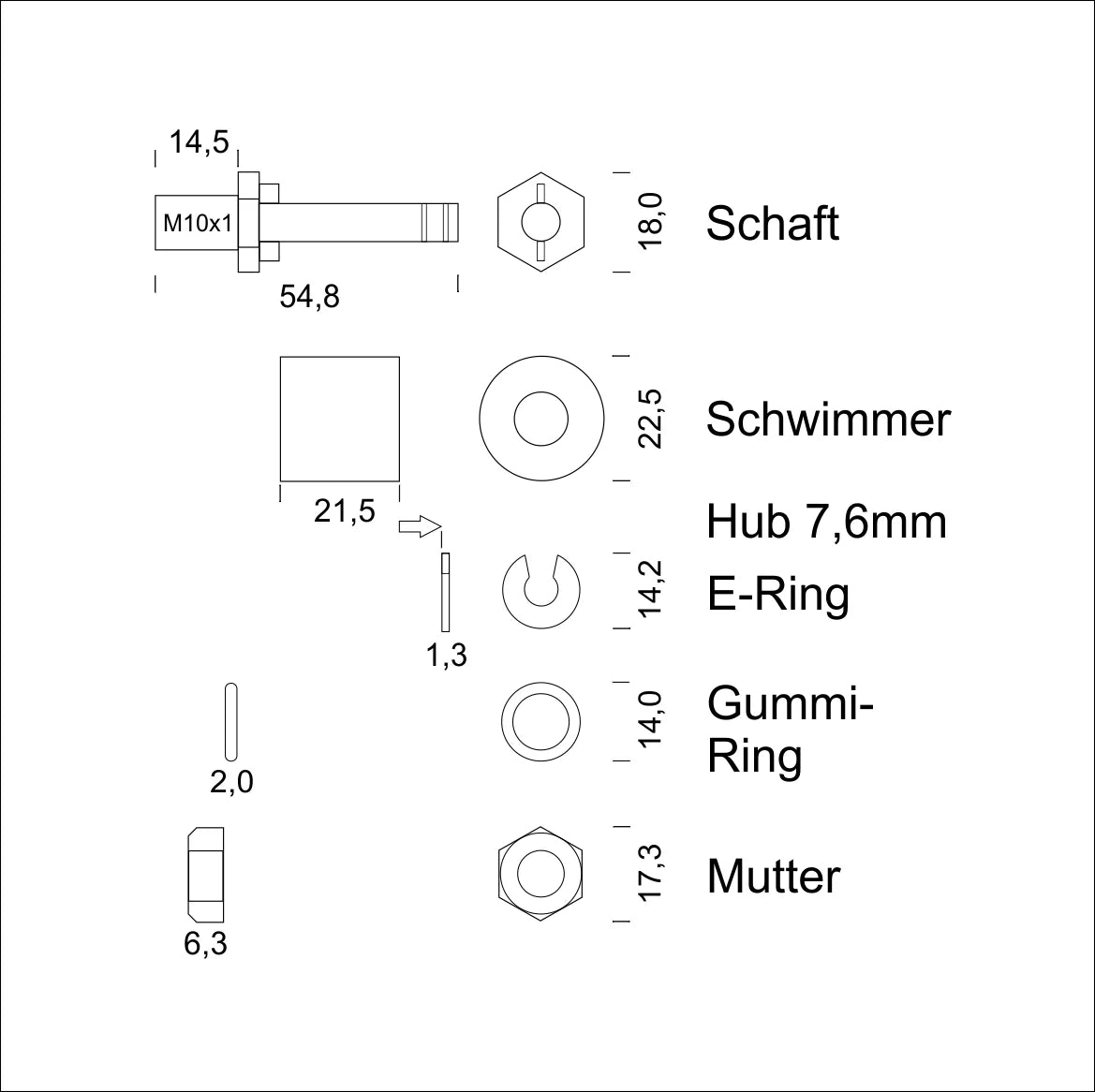Do you have an account?
Log in, so that checkout is faster.
Availability for pickups could not be loaded
Item number: 200361
Delivery time: 2-3 working days
View full details




Logic output for electronics and automation solutions
The active mini plastic float switch is the ideal solution for reliable level detection in electronic controls and industrial applications. Unlike conventional normally closed contacts, this switch generates a clean voltage signal (low/high) that can be directly evaluated by high-impedance logic inputs such as TTL or CMOS circuits.
💡 Important: This float switch is not suitable for Schabus water detectors , but for controls with logic inputs or individual evaluation electronics .
Active switching output with voltage jump (0 V ↔ operating voltage)
Suitable for TTL or CMOS inputs
Maintenance- and wear-free thanks to reed technology
proven plastic housing
Extremely durable at low switching currents (up to 1 trillion switching cycles)
Switching point at approx. 4 cm level
Switching principle changeover – no turning required
Easy installation – matching mounting bracket (Art. No. 300787) available
The float switch is an active signal generator that generates a voltage change as soon as the liquid level reaches the defined switching point. The SHT 8060 uses the "changeover contact" switching principle, meaning that inverting the float is not necessary.
➡️ Ideal for :
Industrial plants with their own logic control
PLC systems with high-impedance inputs
Microcontroller boards (e.g. Arduino, Raspberry Pi, etc.)
Visualization or alarm systems with logic input
Active float switches generate their own electrical signal change when triggered—unlike passive reed switches, which only close the circuit. This makes them ideal for applications where clear voltage information is required.
🔧 Tip: For secure attachment, simply order the appropriate mounting bracket (item no. 300787) at the same time!
Schabus water detector SHT 5000, SHT 5001, SHT 5002
Circuit-controlled potential inputs without their own auxiliary voltage
| Operating voltage | 5 – 42 volts DC |
|---|---|
| Protection class | Impedance 1 kΩ, IP67 |
| Dimensions(WxWxD) | |
| Line | 4m | 3×0.14mm2 | white, LIYY cable, extendable |
| Control voltage | Output voltage 0 volts/Ub – 0.1 volts |
| Temperature | -15° – max. 60° |
Logic output for electronics and automation solutions
The active mini plastic float switch is the ideal solution for reliable level detection in electronic controls and industrial applications. Unlike conventional normally closed contacts, this switch generates a clean voltage signal (low/high) that can be directly evaluated by high-impedance logic inputs such as TTL or CMOS circuits.
💡 Important: This float switch is not suitable for Schabus water detectors , but for controls with logic inputs or individual evaluation electronics .
Active switching output with voltage jump (0 V ↔ operating voltage)
Suitable for TTL or CMOS inputs
Maintenance- and wear-free thanks to reed technology
proven plastic housing
Extremely durable at low switching currents (up to 1 trillion switching cycles)
Switching point at approx. 4 cm level
Switching principle changeover – no turning required
Easy installation – matching mounting bracket (Art. No. 300787) available
The float switch is an active signal generator that generates a voltage change as soon as the liquid level reaches the defined switching point. The SHT 8060 uses the "changeover contact" switching principle, meaning that inverting the float is not necessary.
➡️ Ideal for :
Industrial plants with their own logic control
PLC systems with high-impedance inputs
Microcontroller boards (e.g. Arduino, Raspberry Pi, etc.)
Visualization or alarm systems with logic input
Active float switches generate their own electrical signal change when triggered—unlike passive reed switches, which only close the circuit. This makes them ideal for applications where clear voltage information is required.
🔧 Tip: For secure attachment, simply order the appropriate mounting bracket (item no. 300787) at the same time!
Schabus water detector SHT 5000, SHT 5001, SHT 5002
Circuit-controlled potential inputs without their own auxiliary voltage
| Operating voltage | 5 – 42 volts DC |
|---|---|
| Protection class | Impedance 1 kΩ, IP67 |
| Dimensions(WxWxD) | |
| Line | 4m | 3×0.14mm2 | white, LIYY cable, extendable |
| Control voltage | Output voltage 0 volts/Ub – 0.1 volts |
| Temperature | -15° – max. 60° |